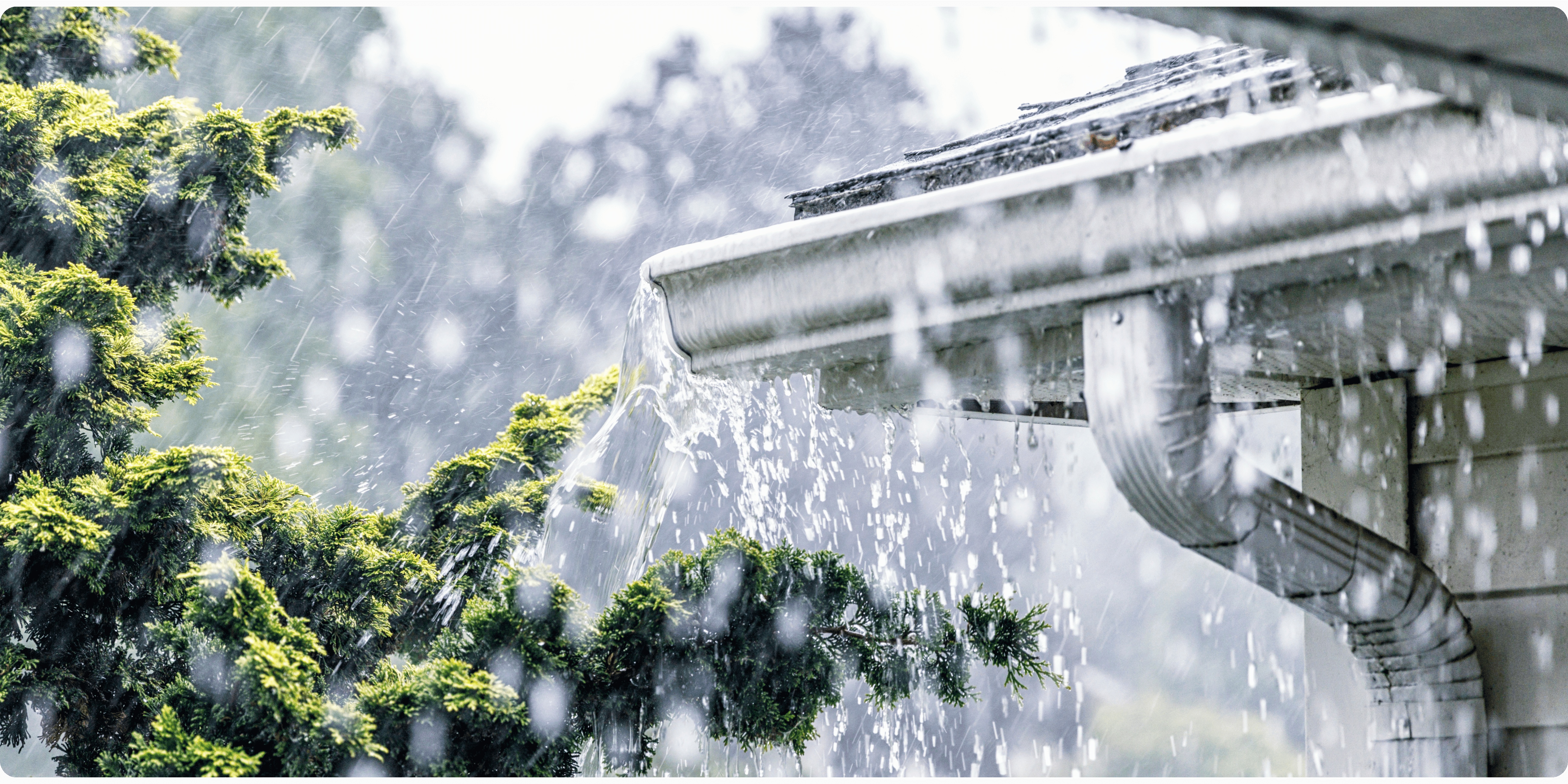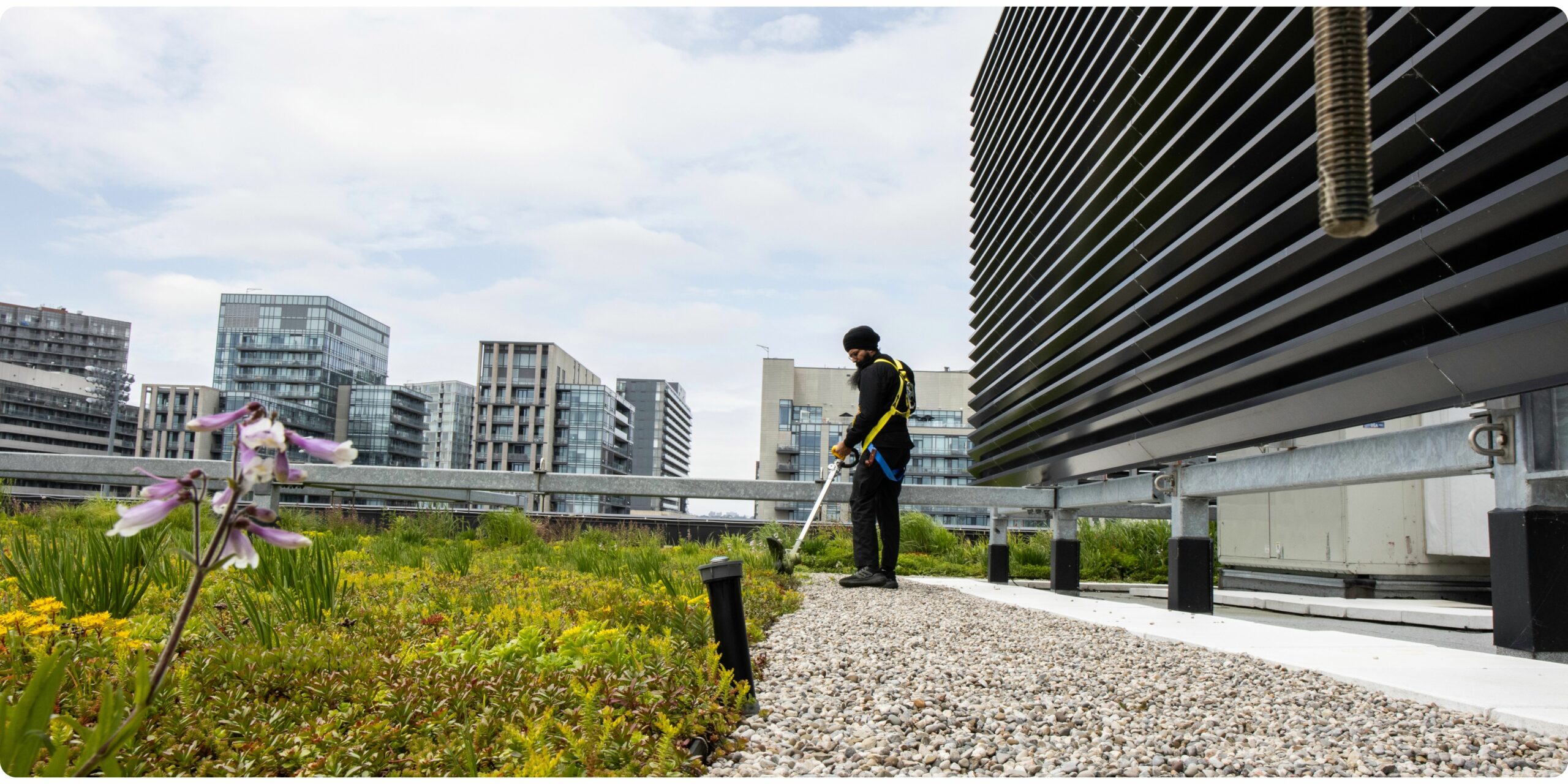Green roofs have become a defining feature of sustainable urban architecture, offering aesthetic appeal and significant environmental benefits. One of their most important roles is stormwater management—reducing runoff, relieving pressure on municipal systems, and preventing urban flooding. However, to ensure a green roof performs effectively during the rainy season, it must be properly maintained and prepared. A well-maintained green roof maximizes its stormwater retention capabilities while simultaneously protecting the building from potential water-related damage and long-term degradation.
The Role of Green Roofs in Stormwater Management
Green roofs are designed to absorb, retain, and slowly release rainwater through vegetation, growing media, and drainage layers. According to the National Research Council of Canada and Green Roofs for Healthy Cities, a properly designed extensive green roof can retain up to 50–80% of rainfall in the growing season and 25–40% in the dormant season. This delayed runoff reduces the burden on urban sewer systems, reduces the risks of flooding, and improves overall watershed health.
During the rainy season—typically spring in most Canadian cities—green roofs can serve as critical infrastructure. In cities like Toronto, which impose stormwater fees or require runoff mitigation through policies like the Toronto Green Standard, an optimized green roof is not only environmentally valuable but also financially advantageous.
Preparing Your Green Roof for Heavy Rainfall
To ensure a green roof is functioning at its peak during the rainy season, proactive preparation is essential. This typically takes place in late winter to early spring and involves both physical inspections and functional assessments.
Drainage System Inspection and Cleaning:
The most critical component of stormwater management is an unimpeded drainage system. Downspouts, scuppers, and overflow outlets should be inspected for blockages caused by leaves, sediment, or ice. Any debris buildup must be cleared to prevent waterlogging or ponding, which can lead to root rot, plant death, and structural stress on the roof.
Media and Soil Check:
Green roof growing media must maintain high permeability while also retaining sufficient moisture for plant health. Over time, compaction or organic buildup can reduce porosity. In preparation for the rainy season, the media should be evaluated for compaction, and areas of erosion or thinning should be replenished. This ensures the roof can both retain and infiltrate rainwater effectively.
Vegetation Health and Coverage:
A healthy plant canopy plays a significant role in slowing down rainfall and promoting evapotranspiration. Gaps in vegetation reduce the roof’s ability to intercept rainfall and can lead to uneven water distribution and erosion. Spring is the ideal time to replant bare patches and remove invasive species to ensure optimal vegetation coverage before heavy rains begin.
Edge and Flashing Inspections:
Edges and flashing around roof penetrations are often overlooked. If compromised, these areas can allow water intrusion during intense rain events. A seasonal inspection ensures the building envelope remains watertight.
Benefits to the Building and Property Manager
By preparing a green roof for the rainy season, property managers can realize a host of benefits beyond compliance and sustainability. These include:
- Reduced Flooding Risk: Slowing and retaining runoff protects both the building and municipal systems during storm surges.
- Extended Roof Lifespan: Properly managed water distribution prevents structural water damage and premature aging of the roof membrane.
- Lower Operating Costs: Fewer drainage failures, leaks, and erosion-related repairs reduce overall maintenance costs.
Risks of Inadequate Preparation
Failing to prepare a green roof for the rainy season introduces significant risks. Blocked drains or saturated media can lead to standing water, which increases the load on the roof structure. Prolonged exposure to water can damage the waterproofing membrane, causing leaks that compromise the interior of the building. Poor vegetation health can also reduce the system’s ability to retain water, increasing runoff and negating the green roof’s environmental and regulatory benefits. In addition, if issues arise during peak rain periods, they are often more difficult and costly to address due to wet conditions and urgency.
Green roofs are powerful tools in managing stormwater and promoting urban resilience, but only when they are properly maintained. As the rainy season approaches, building owners and property managers should prioritize comprehensive green roof inspections and proactive maintenance. Doing so not only safeguards the performance of the system but also protects the long-term health of the building and its surrounding environment. A little preparation now can prevent costly consequences later.


